The palm tree trend is huge in UK gardens this summer – a gardening expert gives top tips for helping them thrive
The tropical garden plant is in high demand this staycation summer – but can it really successfully grow in a cold, rainy climate? An expert gardener answers your questions
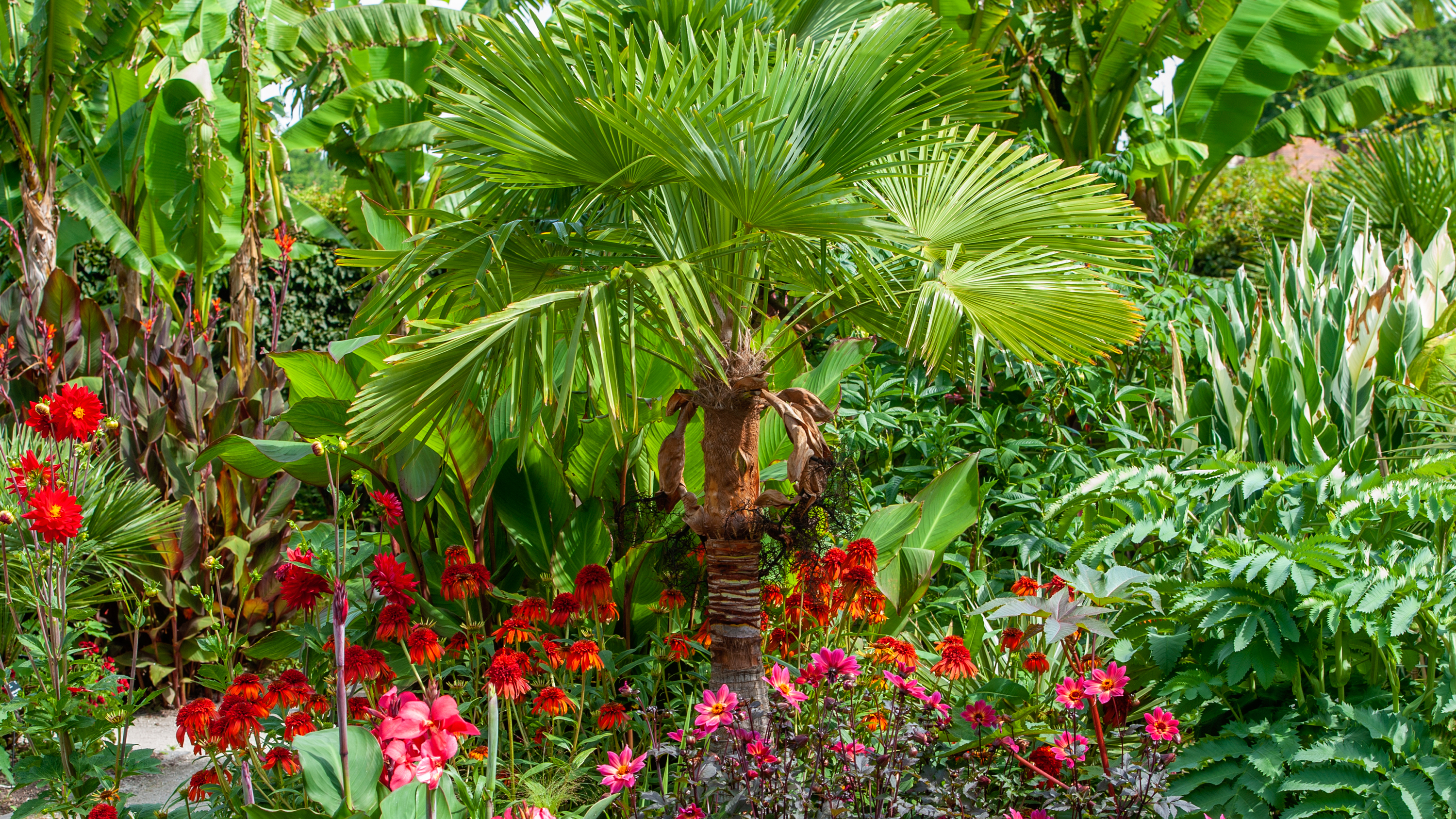
The palm tree trend is dominating British gardens this summer, with ongoing travel restrictions inspiring gardeners to bring tropical garden ideas to their garden design. Palms are the classic tropical plants instantly recognisable as an element of warm climates. They are easy enough to get in the UK – the question is, can they survive the rainy and cold climate with frosty winters? We've asked an expert.
Mad for palm trees
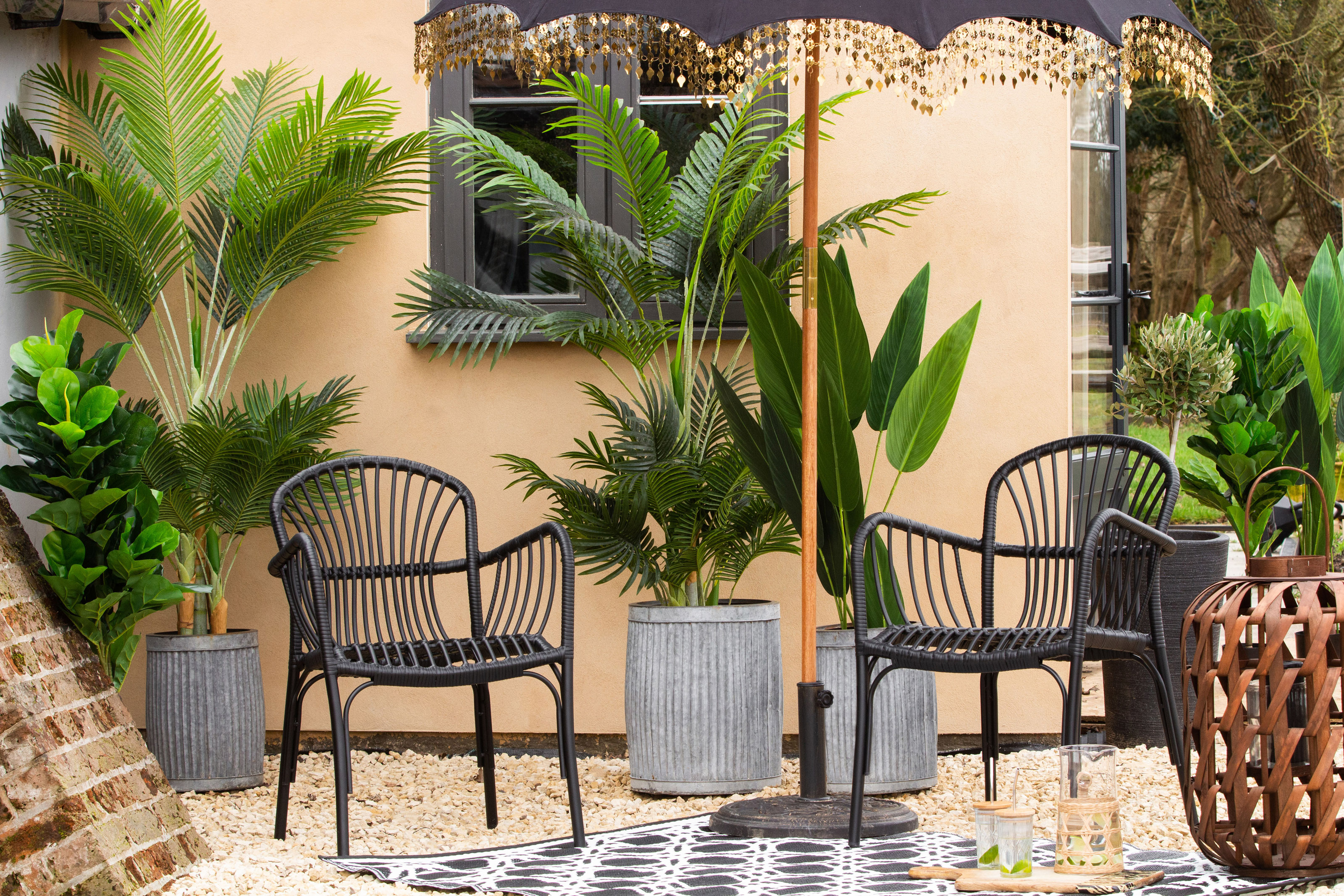
The demand for palm trees has skyrocketed this summer. Google Search Trends data reveals that the search term ‘palm trees for sale’ has increased by a whopping 110 per cent, and other terms such as ‘palm trees for your garden’ have risen by 60 per cent.
The proprietor of Sutton Manor Nursery, William Mitchell, has also noticed a significant increase in the demand for palm trees. He commented: 'In the last few months, the nursery has seen a growing interest in palm trees among British gardeners. More and more people are looking to bring a bit of the tropics to their own gardens, and are doing this with a number of exotic plants.'
Sounds lovely, but is it really possible to have success growing these classic tropical plants in the UK?
Can palm trees survive in UK gardens?
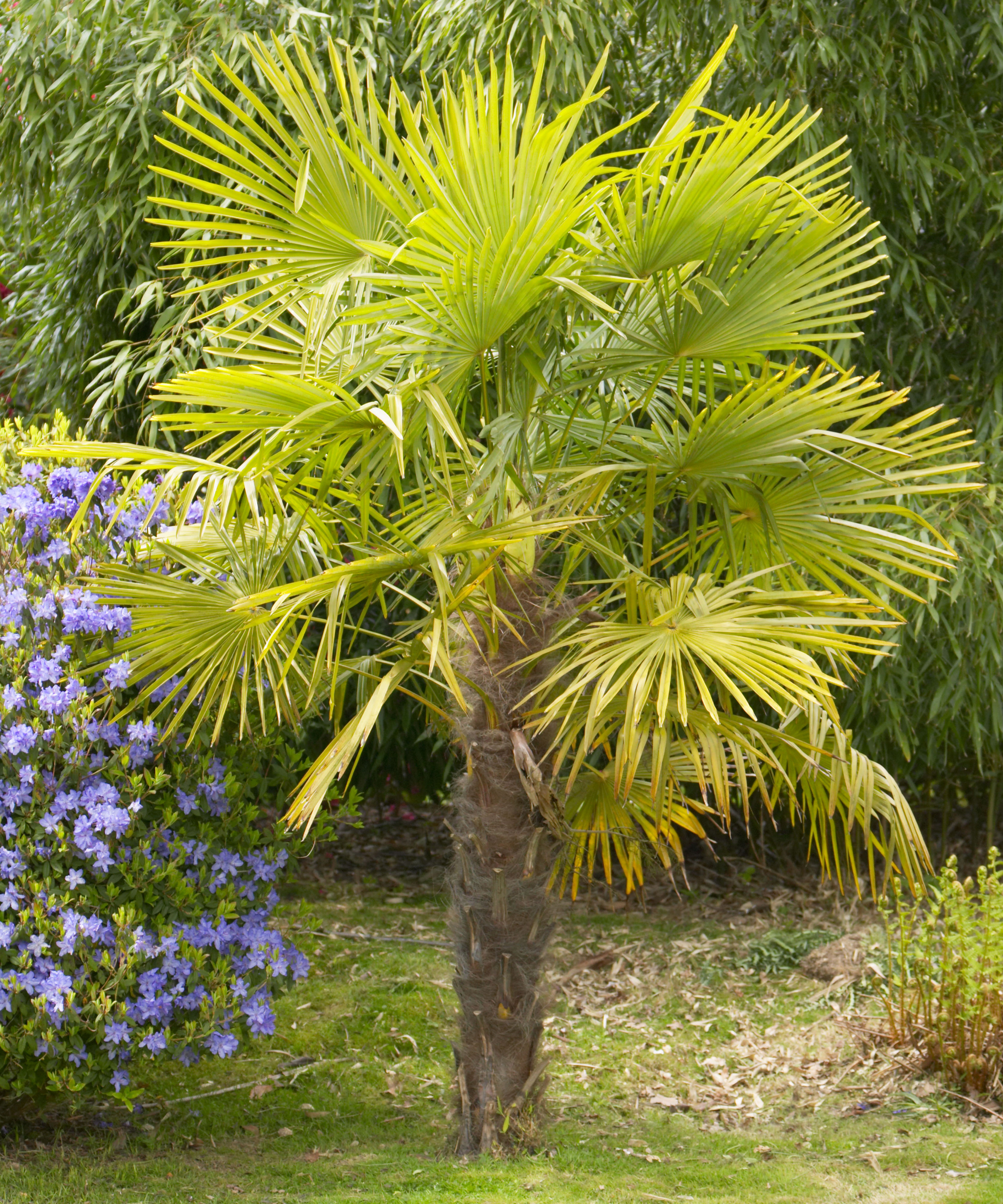
Chusan palm growing in an English garden, Sussex
The answer, reassuringly, is 'yes'. William explains: 'Contrary to popular belief, palm trees are suitable for the UK climate. In fact, many popular species of palm trees are hardy plants, meaning they can withstand temperatures right down to 12ºC in the case of Trachycarpus fortunei “Chusan Palm”. Due to this, palm trees can survive British winters if they are taken care of correctly. Different species of palm trees will have their own distinctive characteristics with the most notable being their unique fronds. Because of this, different palm trees are ideal as indoor plants and others are perfect for outdoors.'
Palm trees are not just for large gardens, either – browse our small garden ideas to see how you could fit one in a smaller space.
When is the best time to plant palm trees?
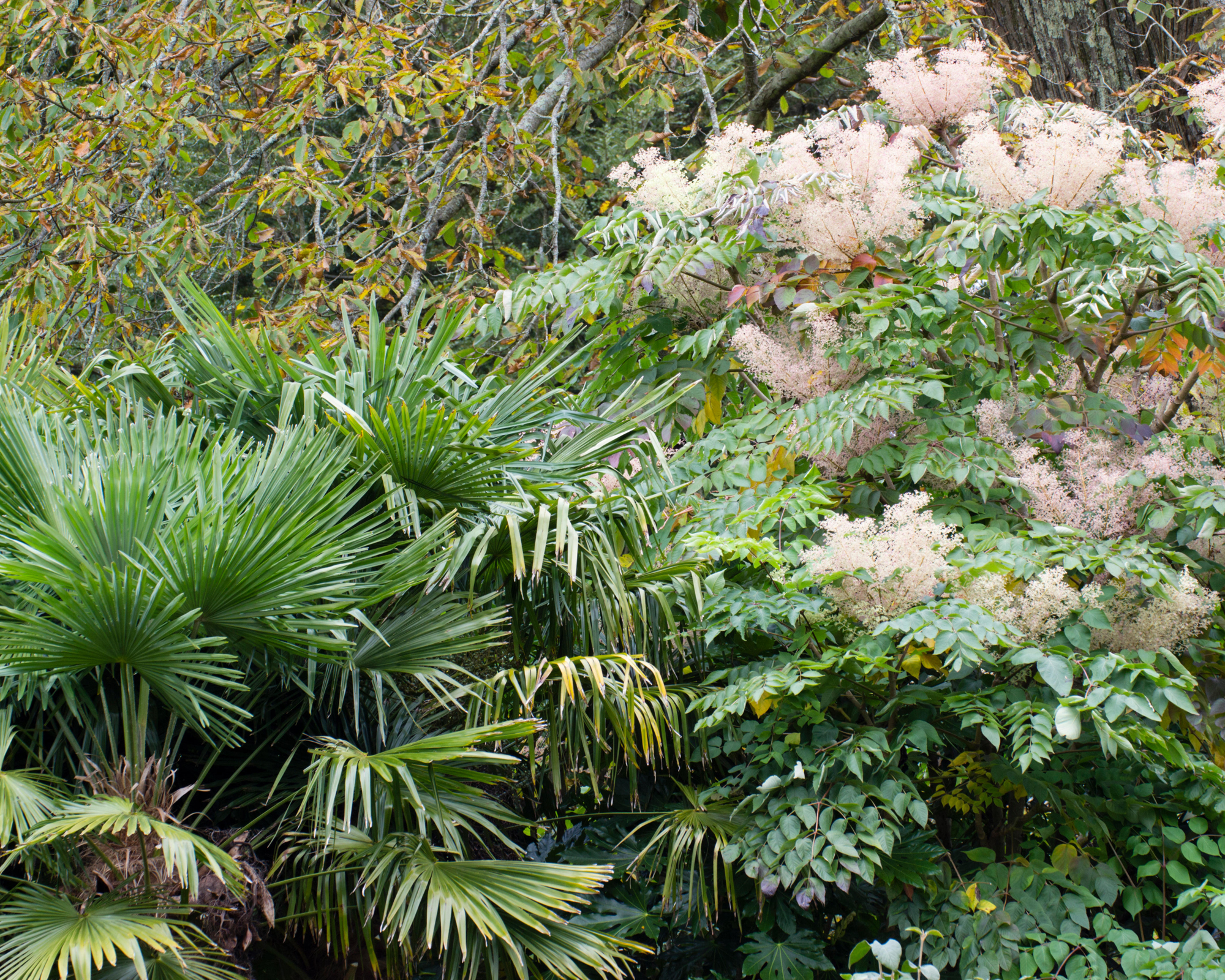
The hardy Chusan palm, Trachycarpus fortunei, and the Japanese angelica tree, Aralia elata, combine in an exotic planting scheme
Right about now is a great time to plant a young palm tree in your garden. According to William, 'although they can be transplanted any time of the year, the best time to plant palms is during spring or early summer, when the soil temperatures are on the increase. This way the palms get five to six months to grow strong before the first frost. When planting, drill a small hole (inspection hole) just above the base allowing you to feel the soil, if it's dry the plant will need watering, if moist the palm will not need watering. This can be very useful when monitoring your plant’s health.'
Do all palm trees need full sun?
Surprisingly, not really. 'When planting palm trees a bright, sunny spot sheltered from strong winds is ideal, especially for species like Trachycarpus fortunei whose large fan-shaped leaves can be damaged in an exposed location. Some thrive in full, direct sun, but others need shady garden spots for beauty and health. Too much harsh sun leaves palm fronds sunburned, much like human skin, but fronds typically don’t recover – however you can cut the fronds to allow new growth.'
Want to grow plants that aren't too fussy about where they are located? Check out our best low maintenance plants.
Alternatives to palm trees to get that tropical look
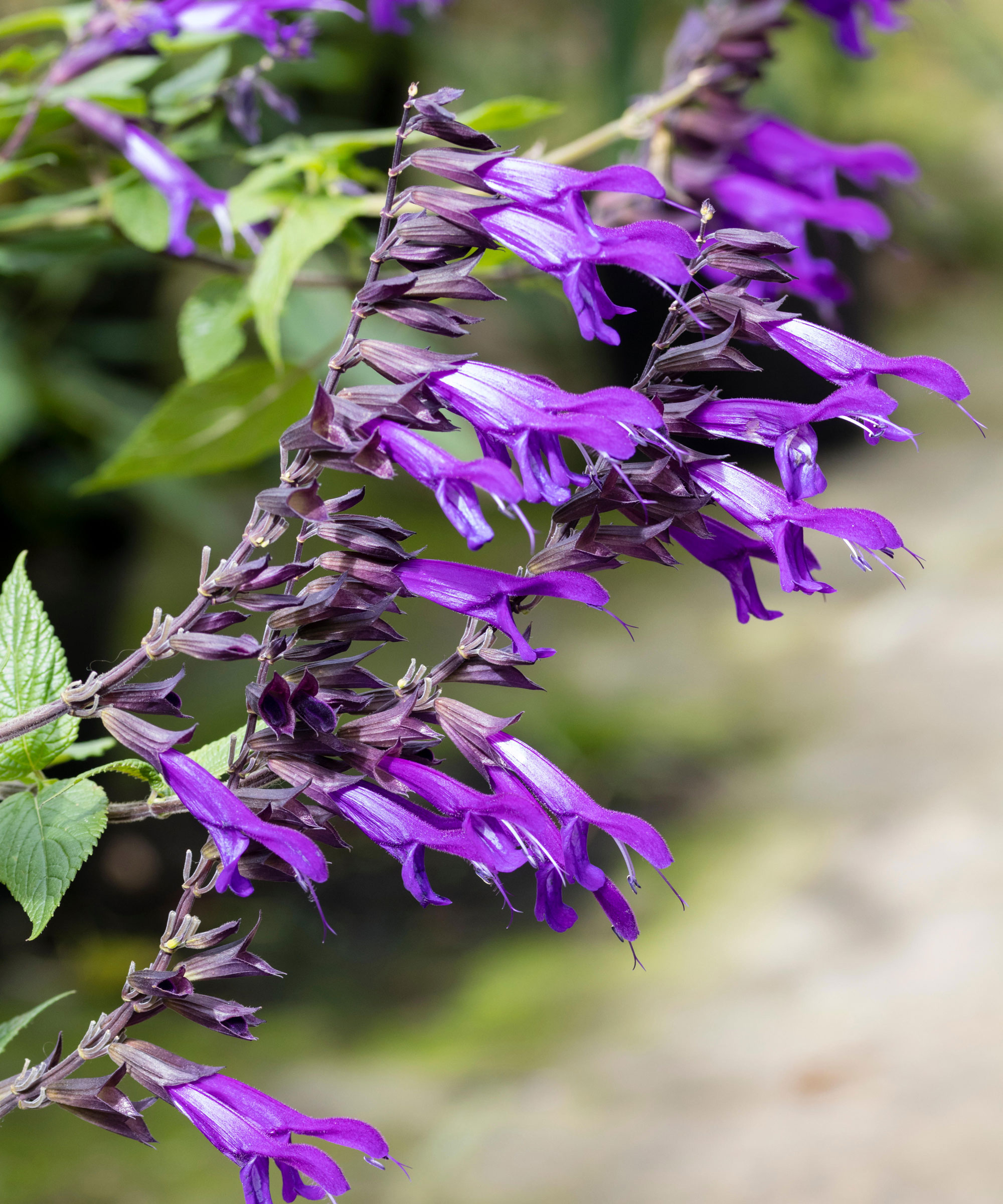
Salvia 'Amistad'
If you're still not sure about planting palm trees in your garden, say, if you live in a windy spot, then you can grow them in containers, taking them in during inclement weather. Alternatively, consider growing different plants that will help you get a tropical theme going.
The gardener, author, and presenter Carol Klein said when we recently interview her that ‘there are lots of sub-tropical plants that will give you that kind of look.' She especially recommends growing ornamental grasses, castor bean 'Carmencita' plants, or a colourful salvia like 'Amistad' – for that exotic, tropical feel. These best tropical plants are hardy and you won't need to worry about them in the wind or rain.
Anna writes about interior design and gardening. Her work has appeared in Homes & Gardens, Livingetc, and many other publications. She is an experienced outdoor and indoor gardener and has a passion for growing roses and Japanese maples in her outside space.
